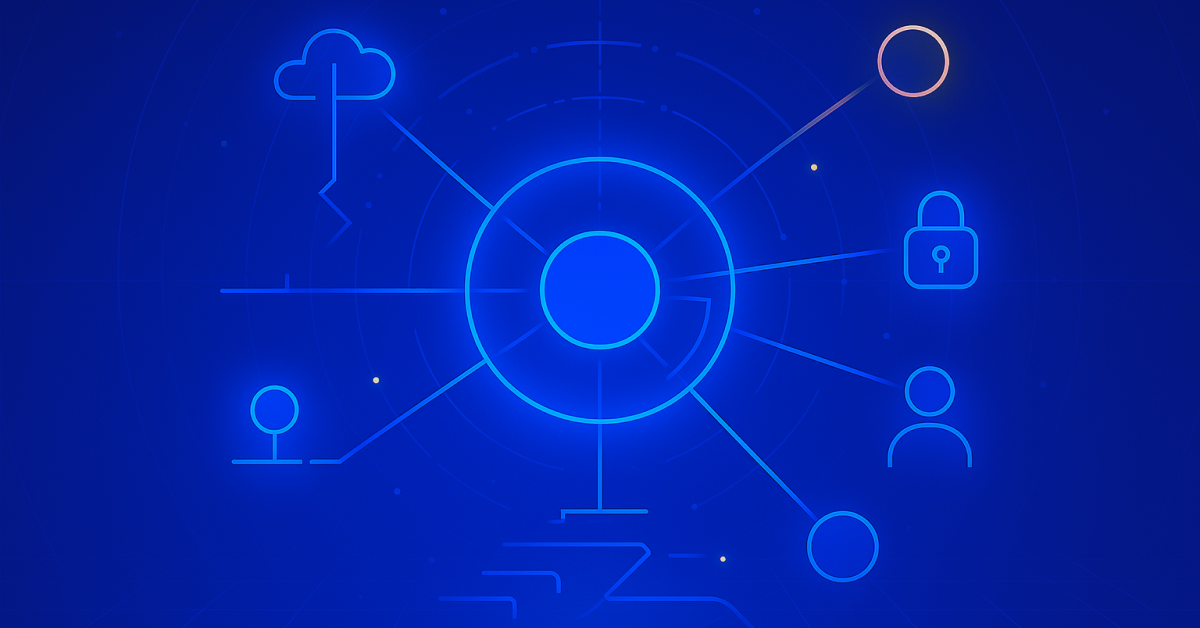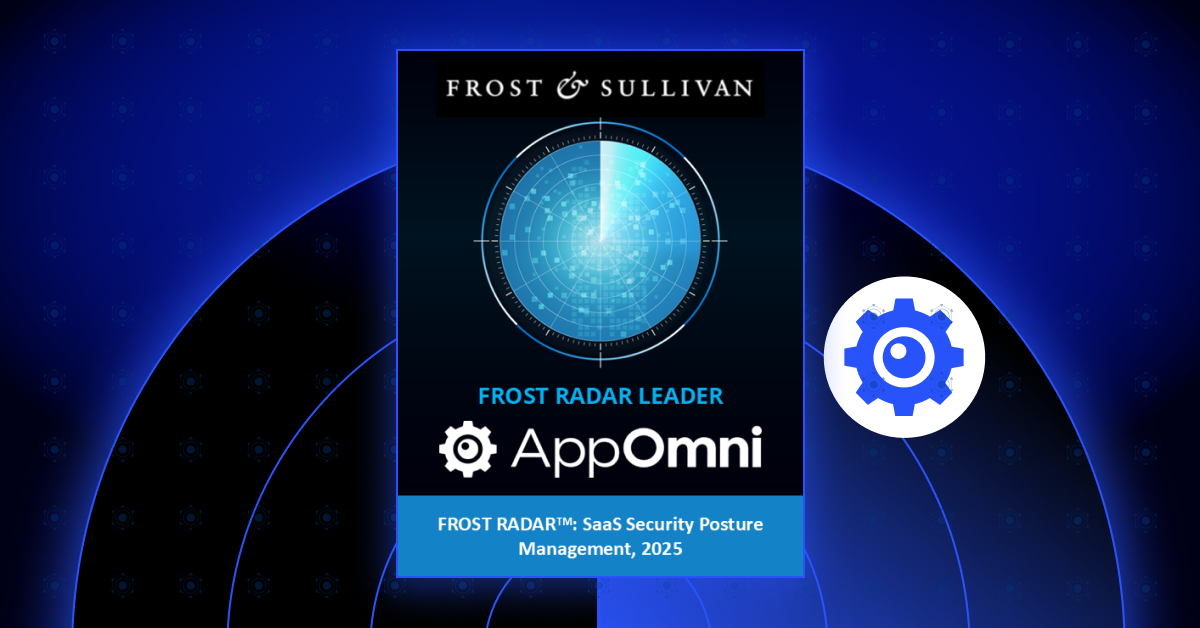While SaaS adoption flourishes, preventable SaaS misconfigurations are responsible for +99% of cloud breaches. Maintaining the security of these platforms and ensuring compliance with evolving industry and government standards is nearly impossible for internal teams to tackle single-handedly.
Even with multi-factor authentication (MFA) and cloud-focused security tooling such as Cloud Access Security Brokers (CASBs) implemented, the complexity of SaaS apps and their access points renders these solutions partially effective at best. Investing in a dedicated SaaS security solution is essential to protect your SaaS apps, end-users, and data.
Understanding SSPM and the Limitations of CASBs
SaaS apps, once simple platforms, have evolved into complex applications that require the appropriate security tooling to safeguard your data. SaaS Security Posture Management, or SSPM, continuously monitors vulnerabilities and misconfigurations within your SaaS apps to secure data.
You may be thinking, If I already have existing security solutions, shouldn’t that be enough to secure my SaaS data? Doesn’t my CASB handle this?
Let’s address that CASB question. Although CASBs monitor and control access to the cloud, they don’t provide a comprehensive overview of your SaaS security posture. They can inspect network traffic flowing through the proxy, but since SaaS apps are often accessed over non-corporate networks, CASBs can’t monitor SaaS-to-SaaS connectivity or third-party SaaS integrations.
For example, if a 3rd party app is connected to your SaaS provider, it may be able to transfer data between the two systems. If data is transferred without the appropriate data access controls set, sensitive data may be exposed, and unauthorized parties may gain access to it. Unlike SSPM solutions, CASBs can’t address the variety of access points that directly connect to your SaaS provider, leaving potential vulnerabilities undetected and your data at risk.

Similarly, depending solely on native security settings and tools may not be sufficient in adequately protecting SaaS access points.
Why MFA Alone Doesn’t Fully Secure SaaS Apps
If your organization primarily uses MFA to protect your SaaS ecosystem, your SaaS apps are still susceptible to compromise. Although MFA helps ensure users are verified before they access your network, it won’t effectively prevent cyberattacks. With sophisticated social engineering techniques, there’s an opportunity window for attackers to bypass MFA and orchestrate an attack. Here are some of the most common ways attackers can circumvent MFA:
- MFA misconfiguration: This misconfiguration could be a simple mistake that unintentionally escalates to heightened issues. If, for example, an administrator accidentally forgets to enforce MFA for all users, your SaaS environment is left vulnerable to threats and attacks. An SSPM solution can monitor and ensure that all users have MFA and alert you if it’s not enabled for any users.
- MFA fatigue: These attacks are usually the result of previous social engineering scams in which your login credentials have already been stolen. The attacker will submit the stolen credentials into an authentic login page, and the recipient will receive an unrelenting stream of push notifications requesting a second-factor authentication (2FA). The attacker relies on the victim becoming frustrated and confirming their identity to cease the constant push notifications, allowing the attacker to enter the account. Threat actors often initiate these scams at busy times, such as the start of a work day or just before a holiday, when people have their guards down. Just recently, Uber, Microsoft, and Cisco Systems fell victim to this attack. MFA fatigue attacks are expected to increase as Microsoft reports that their Azure Active Directory Protection has seen failed MFA attempts skyrocket by 79%.
- Token theft: In this attack, threat actors attempt to steal session tokens from access management platforms such as Okta and OneLogin. For most token thefts, threat actors will create a spoofed website that uses a proxy server to intercept the authentic login page and the targeted user. The typical procedure of this attack goes as follows:
- The threat actor will usually send a phishing email prompting the recipient to follow a link to a proxy website posing as a credible page. The recipient submits their login information to the proxy server, and it’s sent to the actual website.
- The authentic site requests for MFA authentication, and the phishing site proxies the MFA page back to the user.
- After the user enters their MFA code, the code is proxied to the legitimate website and the user is redirected to another page.
- A session token is stolen that grants the attacker access to your SaaS environment.
If your organization was a target of an MFA attack and SSPM isn’t implemented, you may not realize which account the attacker had access to until it’s too late. An SSPM solution can send alerts if it detects unauthorized access within your accounts and offer guided remediation for how to address these vulnerabilities.
In addition to implementing SaaS security, enforce the principle of least privilege access and instill continuous user education within your organization to limit the severity of an attack.
Unprotected SaaS Apps Pose Major Risks, Including Costly Breaches
Not investing in an SSPM solution can carry timely and expensive consequences, especially considering the average cost to recover from a data breach is $4.35 million.
The average organization uses more than 100 SaaS apps, and that number is expected to increase. With that number of SaaS-to-SaaS connections and a lack of security tooling, unprotected SaaS apps can introduce these risks to your organization:
- Misconfigurations: The complex nature of SaaS apps can create minor misconfigurations that affect the underlying infrastructure. Some examples of misconfigurations that may arise in these apps include:
- Data access permissioning: When managing a user’s access to features in your SaaS app, a user may be granted more access and elevated permissions than necessary. This could be for several reasons: Security teams updated user access for a temporary project, or the user was accidentally given access that included elevated permissions. In either case, the excessive access is never revoked. Whatever the reason, if an attack occurred on a highly privileged user, the attacker may gain access to confidential data. But an SSPM platform can continuously monitor users’ roles, alert you if a user is overly privileged, and provide guidelines for how to change that access.
- 3rd party access: Users often install 3rd party apps and forget about them, which poses a risk as they may be connected to SaaS platforms and, in turn, an organization’s sensitive data. To mitigate this risk, teams need to conduct an inventory of all their 3rd party apps, understand the access rights, and evaluate whether the permissions (and apps themselves) are appropriate.
- Configuration drift: When there’s little or no SaaS security monitoring established, users may be provisioned access without any guidance from Security teams. If a SaaS vendor updates their platform, that minor change could accidentally alter a user’s settings and permission scopes, resulting in them having more access than intended. This shift from the set security baseline creates security gaps, increasing the chances of cyberattacks. With SSPM in place, your SaaS ecosystem will be continuously monitored to detect any drifts that may leave your organization vulnerable to threats. Additionally, SSPM will ensure compliance with security standards by identifying drifts that deviate from the desired state.
Your SSPM platform should offer continuous monitoring, among other capabilities, to alert you of these common misconfigurations in SaaS apps.
5 Key SSPM Capabilities for Securing Your SaaS Data
For full protection of your SaaS data, a robust SSPM platform should include these major capabilities:
- Configuration management: Enterprise SaaS apps are dynamic in nature and contain complex configuration settings with no set standard, contributing to security gaps and further risks. Solely counting on internal Security teams to protect data across ever-changing SaaS environments could be time-consuming and challenging. With an SSPM platform, your Security teams can benefit from:
- Data access management: Understand the level of access that apps have across your organization and identify any apps with unnecessary access to your data.
- Guided remediation: Access remediation advice through your SSPM platform to tackle critical issues like misconfigurations, data leakage, incorrect user permissions, and more.
- Threat detection: Feel empowered to remediate threats by receiving automatic alerts if suspicious activity is detected within your SaaS environments. An SSPM platform can facilitate:
- SaaS activity monitoring: If you experienced a data breach or data exposure incident, you can collect all event logs to identify users who had access to your accounts.
- Application-specific detection: Your organization can stay up-to-date with evolving SaaS policy settings and permissions. For example, one SaaS app you use may have best practices and standardizations that are different from another app. An SSPM solution should monitor your compliance with these regulations based on the varying SaaS settings.
- 3rd party app management: Monitor your blind spots and gain an understanding of the 3rd party apps connected to your SaaS environment. In most cases, more than half of 3rd party apps haven’t been used in over six months, yet they still retain access to sensitive SaaS data, increasing the chances of data leakage and exposure. Read more about how 3rd party apps can threaten your SaaS environments.
- Data exposure prevention: Stay alert of any critical data leakage gaps, such as exposure of login credentials that can invite unauthorized users into your SaaS environment to orchestrate an attack. For an added layer of security, implement least-privilege access to ensure that users don’t have overly permissive roles. If a user’s account becomes compromised, you can quickly adjust their level of access to prevent the extremity of an attack surface.
- Governance, risk and compliance: Align your Security and IT teams with business goals while maintaining compliance with your SaaS regulatory requirements. By ensuring compliance across SaaS apps and identifying apps that are noncompliant, you’ll continue to protect SaaS data and ensure that no issues arise.
For further insights on enhancing your SaaS security capabilities, watch SADA’s Cloud N Clear podcast below that features AppOmni’s Chief Product Officer Harold Byun.
AppOmni was founded to address the risks created by complex SaaS apps by closely monitoring SaaS apps and SaaS-to-SaaS connections to prevent misconfigurations from becoming security incidents. See why AppOmni is the leading SSPM solution. Schedule a demo today.
Related Resources
-

ServiceNow Agentic AI: What It Means for CISOs, SOC Analysts, SaaS Admins, and Developers
Agentic AI expands ServiceNow risk. Read why securing AI agents matters for CISOs, InfoSec, SOC, admins, and IT leaders.
-

AppOmni Expands AI Security with Agentic AI Security for ServiceNow
See how AppOmni AgentGuard defends ServiceNow AI agents from prompt injection and access risks, building trust and compliance across platforms.
-

Why Frost & Sullivan named AppOmni a Growth & Innovation Leader in the 2025 Frost Radar™ for SSPM
Frost & Sullivan recognized AppOmni’s leadership in SaaS security innovation, highlighting our AI, Zero Trust, and app-level depth.